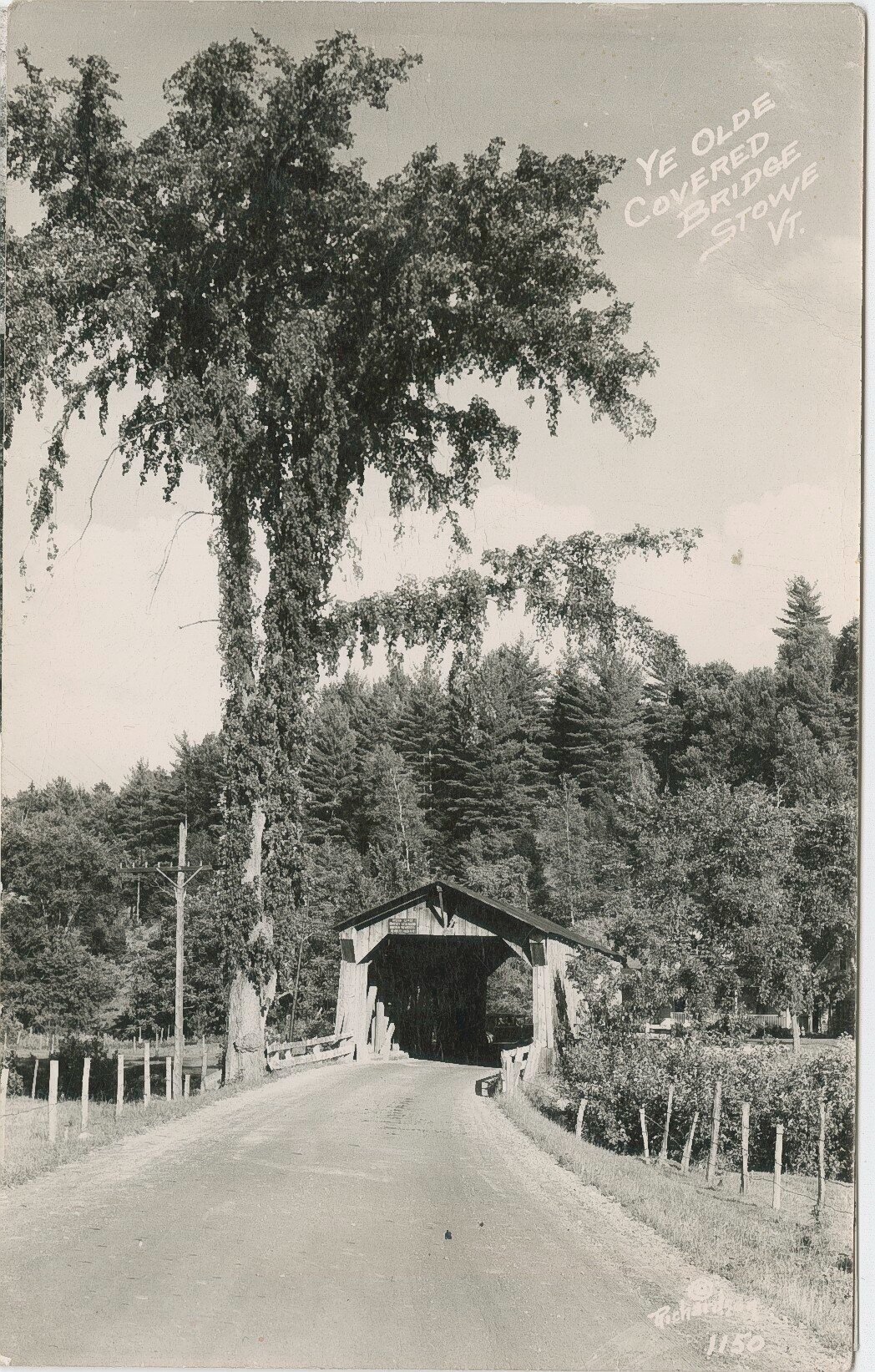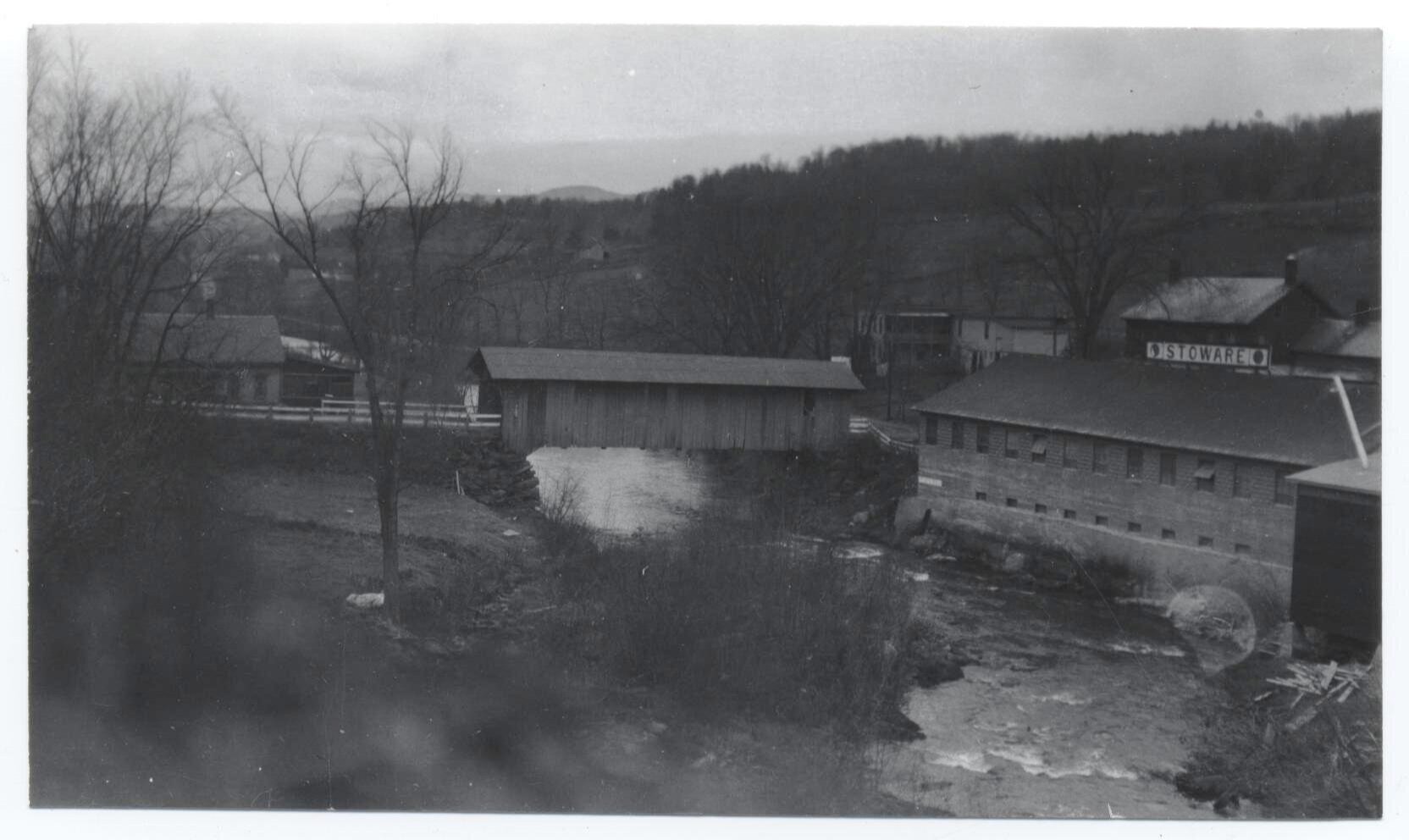Bridges
Covered bridges were a 19th century “wonder”! Between the 1840’s and the 1870’s at least ten covered bridges were constructed in Stowe.
One of the earliest, Gold Brook Bridge, was designed and built by J. W Smith of Moscow, c. 1840 He used the recently made popular the Howe Truss system. Using a truss design and covering the bridge with a roof provided the benefits of stronger load bearing deck and less replacement of the decks because they were less exposed to the elements of weather. Several were rebuilt multiple times. Crossing Gold Brook was a “high bridge at the first bend in the Gold Brook Road near the intersection of Gold Brook Road and Route 100. It burned in 1932 and replaced with a concrete bridge.
Further upstream is “Emily’s Bridge” also know as Gold Brook Bridge built in 1840, so named for the young broken hearted lover (Emily) who legend says took her own life and who’s ghost abides there. Not only is it a National Historic Site, it is still one of the most photographed sites in town.
The second covered bridge at the mill in Moscow was replaced with a concrete bridge in 1929, which is in the Vermont register of historic sites.
Cleveland Bridge crossed Miller Brook in Nebraska Valley. Today it is know as the Chamberline/Rhodes Bridge.
Crossing the West Branch were the Bridge Street Bridge from 1848 to 1943, when it was rebuilt without the wooden cover to accommodate changes in size of vehicles, and the Slayton/West Branch bridge which was removed when the road direction was changed from a right angle turn to an arc c. 1932.
The Mill/Lower Village Bridge crossed the Waterbury/Little River from the Main Road/South Main Street to River Road.
The newest covered bridge crosses the “West Branch” of the Little River is on Brook Rd near Top Notch Resort. It is a contemporary steel and concrete bridge with a wooden cover.
Gold Brook Bridge
aka
Emily’s Bridge
Covered Bridge Road
c 1840 Howe Truss in Stowe Hollow
On the National Historic Register, this bridge was built by J.S Smith of Moscow. It is said that in the 1850s, Emily fell in love with a young man from a rich family, but his parents refused the wedding. He told her to wait on the bridge at midnight, but he didn't show, and she was so distraught she is said to have taken her own life. To the west was a saw mill from 1832 (dismantled in 1927).
This famous story of Emily’s Bridge is featured in Atlas Obscura and additionally VRP.
Moscow Bridge
c 1843-1921
“Bridge St. Bridge”
1842-1943 Covered Bridge 2 (on Mtn Rd)
It was voted at Town meeting to replace the original bridge with a covered bridge in 1841. The primary purpose was to conserve the deck. At an undetermined date a covered walk was added. In 1943 the bridge was replaced by a steel and concrete bridge due to increased truck traffic. In c 1978 a covered walkway was added. A replacement bridge was built in 2015.
Slayton Bridge Mountain Road
1842- 1933
The Slayton Bridge Covered Bridge stood near 1663 Mountain Road. When Mansfield Road became State Route 108 in 1933, the layout of the road was changed to its current location. A steel and concrete bridge was built, which was replaced in 2016.
The Slayton Bridge can be recognized in photographs due to the straggly evergreen tree
at the southeast corner.
Mill Village Bridge
c 1842 - c 1929 Road between South Main Street and River Road
This bridge survived multiple floods, including the fall of 1927 record breaking flood.
The Mill Village Bridge, an important historical structure, stands as a testament to the industrial past of the region. Built in the late 19th century, the bridge was originally constructed to facilitate the movement of goods and residents between the various mills that thrived along the riverbanks.





